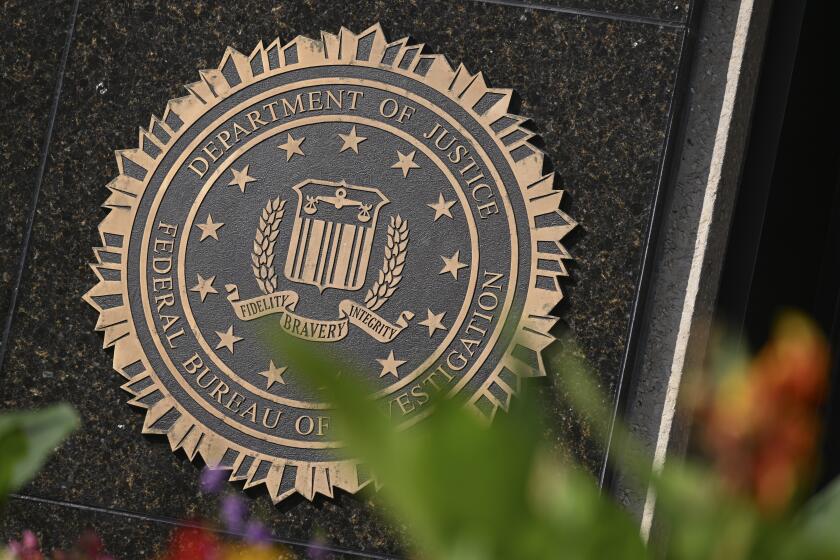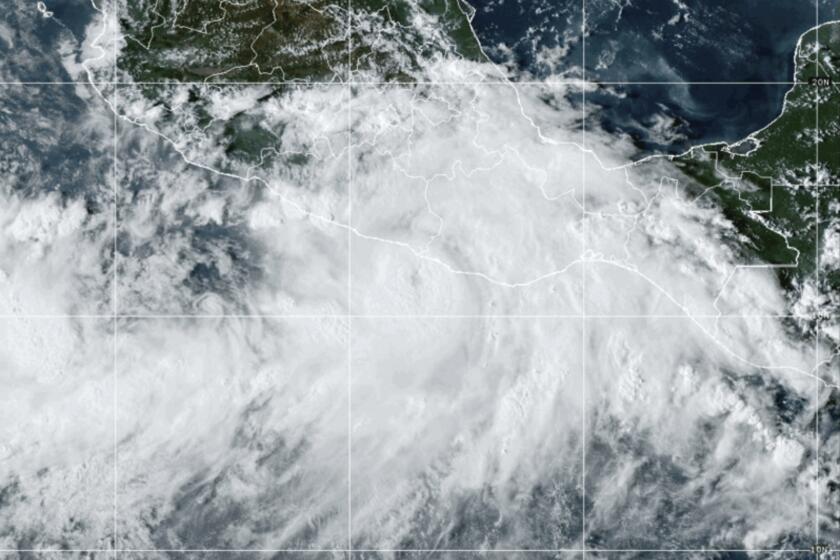Gas prices inch lower
Pump prices eased slightly in most of the country, including California, but analysts warned that the small respite may be short-lived, especially after oil traded higher Monday in spite of a pledge by Saudi Arabia to increase production.
After a weekend summit where producers and oil-consuming nations discussed head-spinning crude prices, Saudi Arabian officials said that they would raise output by 200,000 barrels a day to 9.7 million.
But the market considered it a drop in the oil bucket given rising demand worldwide and supply concerns prompted by last week’s attacks by militants on a Nigerian offshore oil rig and a Chevron Corp. pipeline.
“The result of the meeting was a very small increase in production, some questionable commitments for capacity increases and no reasons for the speculators to move out of the commodity,” said Bruce Bullock, director of the Maguire Energy Institute at Southern Methodist University in Dallas.
Light, sweet crude for August delivery climbed $1.38, or 1%, to close Monday at $136.74 on the New York Mercantile Exchange. Oil prices have doubled in the last year.
Over the last week, the average price of a gallon of self-serve regular gasoline slipped to $4.079 nationally and $4.585 in California, both posting a 0.3-of-a-cent decline, according to the Energy Department’s survey of filling stations, released Monday.
That marked the first price drop for the U.S. and California averages since March 24, when the national average was $3.259 a gallon and the state average was $3.602. Gasoline prices fell everywhere except the Rocky Mountain region and parts of the West Coast.
On an even happier note for drivers, the Internal Revenue Service said Monday that it was raising the automobile mileage deduction for the last six months of 2008. For business vehicles, the rate is increasing to 58.5 cents a mile from 50.5 cents. For individuals deducting medical and moving expenses, the rate is rising to 27 cents a mile from 19 cents.
Analysts offered few assurances that gasoline prices had finally peaked.
“We may drift a little lower or a little higher in the next few weeks, so enjoy the next 30 to 40 days,” said Tom Kloza, chief oil analyst for Wall, N.J.-based Oil Price Information Service. Prices could easily jump again because of hurricanes or other factors, he said.
That prospect was more than some motorists could stomach.
“I can’t afford $100 fill-ups,” said visual effects supervisor Greg Kimble, 50, who lives on the Miracle Mile and has had to drive his 1969 Chevy Impala because his roommate moved to Texas, taking his Honda Civic with him. Kimble is riding the bus more often to work and wishing members of Congress had to do the same.
“The people in position to make the laws do not have to deal with life on a real-time basis the way that we do,” he said.
Jo Carol Hunter of Newport Beach said she recently forked over $70 to fill up her 1998 Toyota Camry, expecting to get back some change. It took the whole $70 and her tank still wasn’t full.
Hunter’s job requires her to visit doctors’ offices to get referrals for a recovery center for plastic surgery patients. Now she uses the telephone and e-mail more, cutting her driving to 50 miles a week from 100.
“How do we get it to stop or slow down or reverse itself?” asked Hunter, 62. “We want to know who to blame, where to point fingers and who can get it fixed.”
At a congressional hearing Monday, some lawmakers said they were planning legislation to rein in the behavior of oil commodity speculators, who are among the many suspects in the rise of oil prices. Large investors held 71% of futures contracts in April, more than double the level in 2000, according to the Commodity Futures Trading Commission.
“Since August 2007, oil has become the hedging instrument against the weakening dollar and rising inflation,” Roger Diwan, a partner at consulting firm PFC Energy, told the House Energy and Commerce Subcommittee on Oversight and Investigations.
Outside the U.S., American motorists were getting little sympathy, particularly in Europe, where taxes help boost prices well above U.S. levels.
“Stop complaining until you reach at least $10 per gallon,” Asbjoern Grande, a personnel manager in Hoeyanger, Norway, said in an e-mail. There, gas was selling for $9.79 a gallon, he said.
“We all have to walk and bike more, and think before we drive.”
--
More to Read
Sign up for Essential California
The most important California stories and recommendations in your inbox every morning.
You may occasionally receive promotional content from the Los Angeles Times.











